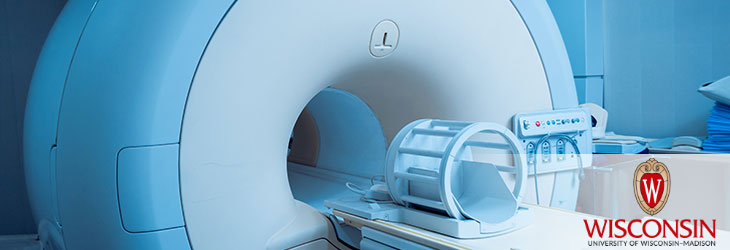Radiation Therapy

Fan-Beam Microwave Horn for Improved Organ Resection
WARF: P07328US
Inventors: David Mahvi, Mark Converse, Punit Prakash, John Webster
The Wisconsin Alumni Research Foundation (WARF) is seeking commercial partners interested in developing a medical device for microwave ablation in bloodless surgery and resection.
Overview
Liver cancer is the fifth most common cancer in the world and is frequently fatal. Surgical resection currently is the preferred treatment for liver cancer. During the time-consuming treatment, a surgeon cuts through tissue to remove a lobe of the liver while attempting to avoid or close large blood vessels. Blood loss during this procedure can adversely affect patient survival and increase hospital stay and complication rate.
Radio frequency (RF) or microwave (MW) ablation coagulates tissue before resection by inserting an electrode into the tissue and passing current from the electrodes through the patient to seal the tissue from blood flow. Unfortunately, the time required to remove and reapply the electrode to cover the necessary area of tissue makes the procedure too time-consuming for clinical practice. A procedure utilizing multiple electrodes with RF ablation procedure requires less time. However, a MW ablation solution to the issues of time and blood loss during resection is still needed.
Radio frequency (RF) or microwave (MW) ablation coagulates tissue before resection by inserting an electrode into the tissue and passing current from the electrodes through the patient to seal the tissue from blood flow. Unfortunately, the time required to remove and reapply the electrode to cover the necessary area of tissue makes the procedure too time-consuming for clinical practice. A procedure utilizing multiple electrodes with RF ablation procedure requires less time. However, a MW ablation solution to the issues of time and blood loss during resection is still needed.
The Invention
UW-Madison researchers have developed a dielectric-filled microwave waveguide-fed horn antenna applicator for bloodless surgery and resection, especially resection of the liver. The applicator is placed against the surface of the liver and microwave power is applied. The horn antenna applicator radiates microwaves uniformly into the tissue, causing coagulation. This design provides fast and efficient control of coagulation while allowing a bloodless resection area.
The planar design of the horn antenna application is superior to small or cylindrical radiator sources in that it provides less attenuation and a more constant temperature range in the coagulation region. The surface applicator also offers the user control because there is no need for imaging modalities such as ultrasound to confirm placement or coagulation.
The planar design of the horn antenna application is superior to small or cylindrical radiator sources in that it provides less attenuation and a more constant temperature range in the coagulation region. The surface applicator also offers the user control because there is no need for imaging modalities such as ultrasound to confirm placement or coagulation.
Applications
- Liver and other organ resections performed by surgeons
Key Benefits
- Solves issue of blood loss during resection of organs
- Potentially could reduce one hour procedures to fifteen minutes
- Eliminates need for electrode array placement
Stage of Development
Built and tested in the researchers’ laboratory (unlike other patented but only theoretical devices), with in vivo testing planned in the future.
Additional Information
Related Technologies
For current licensing status, please contact Jeanine Burmania at [javascript protected email address] or 608-960-9846